Ecommerce Return Policy: What is It, Benefits & How to Write
Up to 50% of customers will check an eCommerce return policy of an online store before buying. Also, 80% of customers who are satisfied with the returns process tend to repurchase with the same retailers. These figures show us that return policy is an important factor that affects sales and customers loyalty. Thus, this blog will show you how to write an effective eCommerce return policy to boost sales and build customer loyalty.
Claue – Clean and Minimal Magento Theme
We provide an amazing Magento theme with fast and responsive designs. Let’s find out!
What is a Return Policy?
Return policies are the guidelines that a shop establishes to govern how customers return and exchange undesired products. In a return policy, customers can find out what things can be returned and for what reasons, as well as the duration during which returns are permitted.

How does eCommerce Return Policy Affect Your Sales and Customer Loyalty?
To understand the importance of return policy, our blog will analyze the viewpoint of new customers and customers who purchased your items but want to return them.
How does the eCommerce Return Policy Affect New Customers?
Firstly, it’s important to know how the return policy affects new customers. Unlike physical stores, eCommerce stores can’t allow customers to see the products in reality before making a purchase. Hence, new customers tend to be afraid of buying bad products. Then they will find certainty by checking the return policy before buying.
Like other policies, it’s important to clarify terms in your returns policy. Make sure that customers can understand your returns policy clearly. Then they will be assured when purchasing your products. For new customers, a clear return policy can gain trust from them. A new customer will choose a store with a straightforward return policy than another store which doesn’t have one. Hence, a return policy indirectly increases your sales.
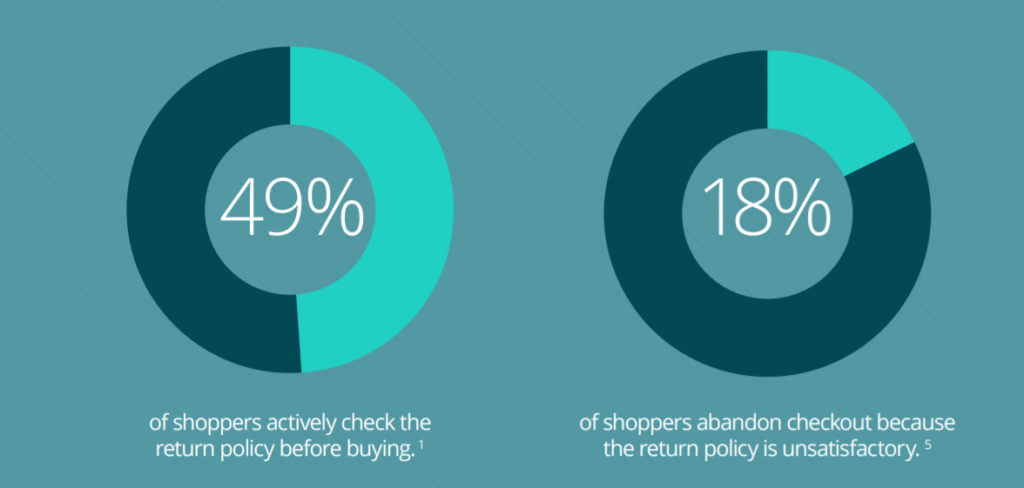
How the eCommerce Return Policy Affects Customers Who Purchased Your Items but Want to Return?
Secondly, from the viewpoints of customers who purchased your items but want to return them, the return process is included in the customer experience. In case your return process is too complex, a customer will not want to return. Instead, they will feel dissatisfied with your brand. As a result, the majority of them won’t buy from your store again. That’s a big loss.
In addition, these customers can talk with their families and friends about bad experiences. Hence, you can lose many potential customers without recognizing it.

The better situation is that customers require you to return your products. Although a product return refers to a dissatisfied customer, you still have an opportunity to improve. Each product return becomes an opportunity to amaze the customer and convert them into a lifetime purchase. To do so, you need to build a smart eCommerce return policy. So your consumer will have a flawless product return experience, which increases confidence, quality, and efficiency in the eyes of the shopper – all important factors to customer satisfaction.
How To Build an Effective eCommerce Return Policy?
As mentioned above, an effective return policy can boost your sales and increase customer loyalty. Hence, here are some guidelines for you to build a great return policy.
1. Make eCommerce Return Policy Visible to Customers
Since many people conduct pre-purchase research, make sure that customers can see your return policy easily. A lot of online merchants bury their return policy beneath many terms and conditions that can only be accessed via a link in the site’s footer. However, online customers want to save time, so it may annoy them. Thus, you can place a return policy on the homepage, product pages, during checkout and in the order confirmation email.
On the Home Page
Home pages are the main channel for customers to interact with store owners. So you should put a link to access your return policy. Normally, customers will find your return policy on the footer of homepages.

On the Product Pages
Putting your return policy on the product pages make it easy for customers to see. Also, it increases sales by keeping customer’s eyes on your products. You can see the headline “View our return policy” on the product pages as in the image below.
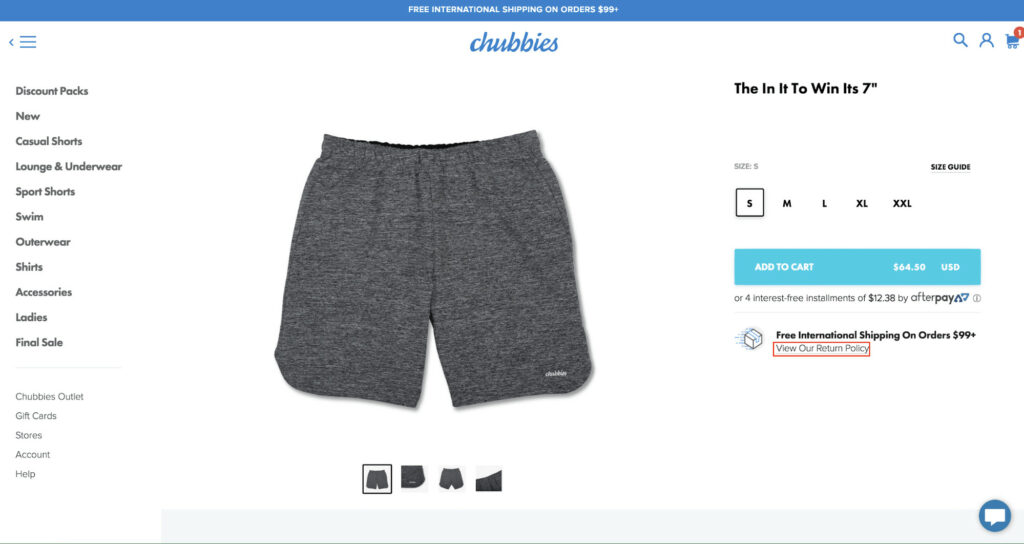
During Checkout Process
Having a link to your store’s return policy during checkout will encourage customers to complete the transaction. Include your return policy throughout the last stage of the buying process prevents cart abandonment. Also, it reaffirms your brand’s credibility.
In the Confirmation Emails
In the order confirmation email, you should include a link to open your return policy. It is the final reminder to customers that you care about their pleasure. Besides, it describes your readiness to provide a seamless return experience if customers are unhappy. Furthermore, when you refuse to customer’s refund request, you also should put your return policy for customers to explain the reasons.
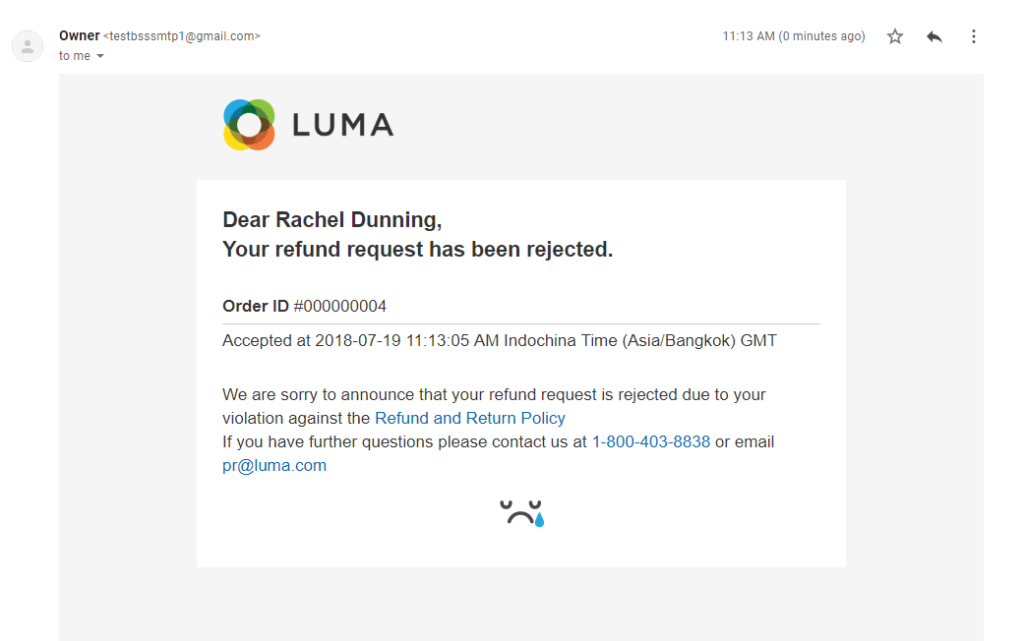
2. Never Copy and Paste
As each store has different characters, you shouldn’t copy return policies from others. Instead, you need to do it yourself. Building a personalized return policy will decrease losses. Additionally, it strengthens your brand in customer’s minds.

3. Use Easy and Common Language in Your Return Policy
The goal of a return policy is to communicate with customers about return issues. Thus, you need to use plain English to ensure customers understand all the terms. Then customers can buy your products without worrying.

It is a good idea to write a return policy in a friendly tone. It means you shouldn’t use authoritative language to interact with customers.
4. Offer Free Return Shipping
More than 80% of online customers want to have free return shipping. Hence, offering free return shipping can be a plus point for your store. Many store owners think that free shipping will make their business a loss. However, it seems not to be so. The cost of free return shipping should be considered in the context of the whole cost of client acquisition. For example, the fee of return shipping is about $10 while the cost to have a new customer is $100. You can realize that persuading the existing customers is much cheaper than approaching a new one. Hence, the free return shipping policy is one way to invest in the future.

5. Clarify Conditions for Return Policy
To make sure customers understand your return policy, it is important to clarify all conditions in detail. A common return policy often includes return timeframe, return conditions, fees and other options.
Return Timeframe
Firstly, time frame refers to a period of time during which your store accepts the return requirement and refunds for customers. You can modify this interval based on the product and holiday times that occur.
Make sure to mention a certain number of days that customers can require a return. Also, mention clearly the number of days it will take for your customers to get their refund.

For example, customers can require returns within 15 days from when they receive the products. Besides, customers can receive refunds after 7 days from when the return requirement is accepted.
Return Conditions
Secondly, you should state the conditions to accept a return requirement in your return policy. There are many things you should consider such as when the products were bought, the status of the products, reasons for returns and the packaging of them. (One of the reasons for return requirements may come from the shipping problem, which you can read more about here.)
For example, you only accept products if they have some problems. In case customers want to return due to personal reasons, you can refuse to accept their offers.
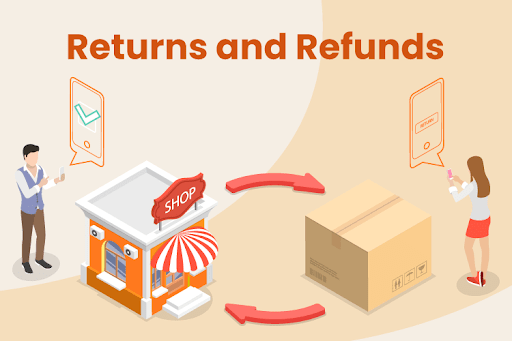
Fees and Other Options
Thirdly, a clear return policy should consist of other options for customer’s choices as well as the related fees. You can ask yourself some common questions to fill in your return policy.
- Is it possible for customers to get store credit or exchange an item?
- List all of an item’s related fees and explain why they occur.
- Consider any deductions and costs that are part of the tax filing procedure. Not all transactions are visible right away.
- Will additional fees apply to overseas orders?
When you clarify all terms of your policy, you can address all customer’s concerns. Also, it prevents you from fraud returns.
6. Create a FAQ Page about Return Policy
FAQ is known as Frequently Asked Questions. You can see the FAQ page on major online stores. FAQ page helps store owners explain in detail some common questions that many people ask. It saves time for both customers and businesses. Hence, you can consider creating a FAQ page about the return policy.
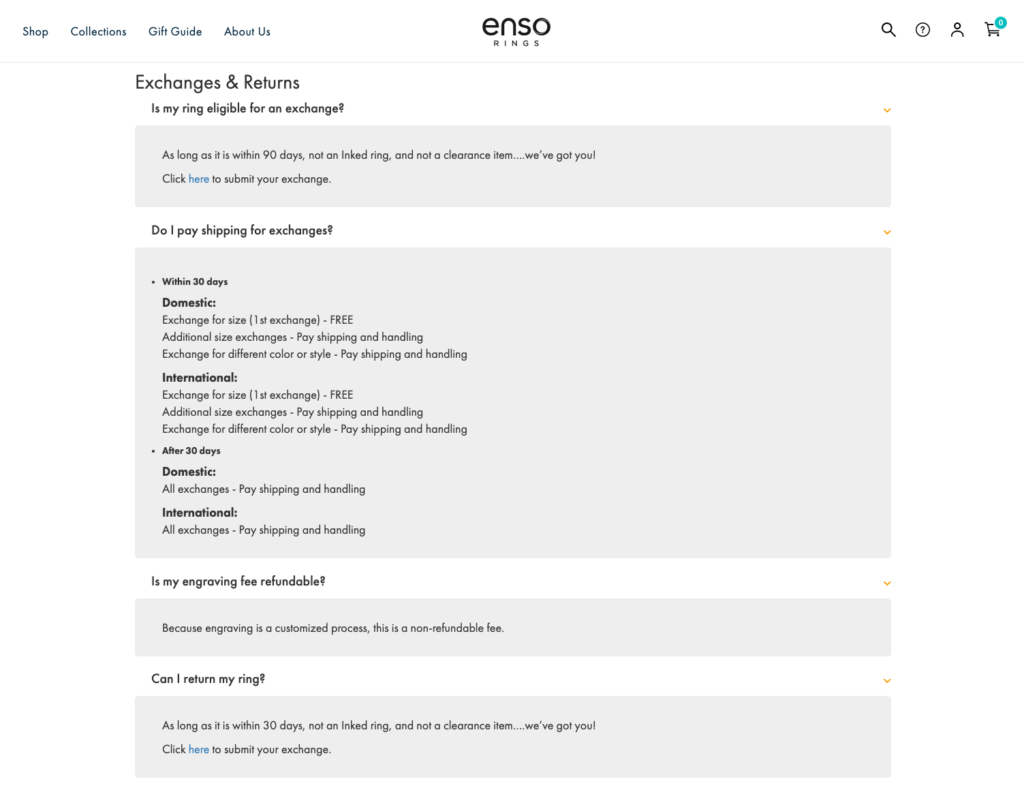
The FAQ page is not long as the return policy documents. So customers can catch up on the key ideas they need in a short time.
7. Visualize Your Return Process
People prefer images to texts. Hence, visualizing your return process attracts more customer’s attention. You can create a brief product return guidance into your policy as in the images below. When a customer can imagine how simple it is to return a product, they will be encouraged to return it, and thus the sale will continue.
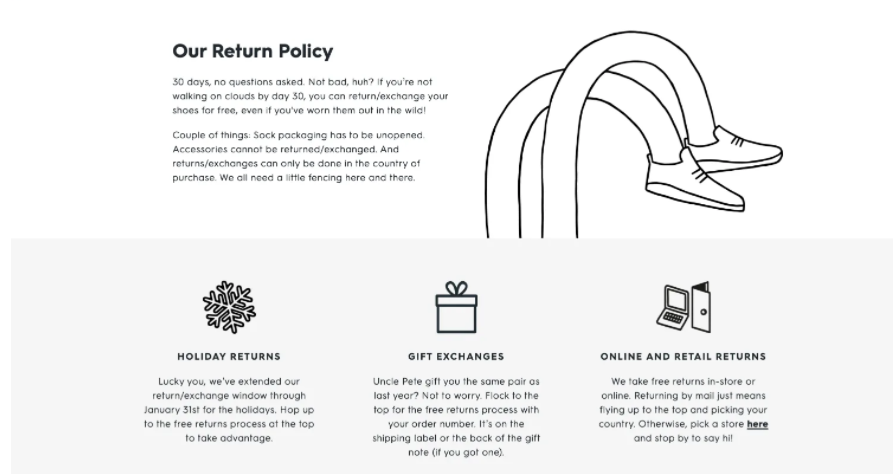
Conclusions
To sum up, you can increase sales and convert dissatisfied consumers into loyal customers by changing your eCommerce return policy to be more customer-centric.
Arrowtheme wishes you a successful business. If you find some technical problems during running an online business, feel free to contact us.
Contact US – ArrowTheme:
– Email: [email protected]
– Facebook: Facebook.com/ArrowThemeTeam
– Website: ArrowTheme.com
Read more: Shopify Bundle App: Top 10 Apps to Raise Store’s Revenues



